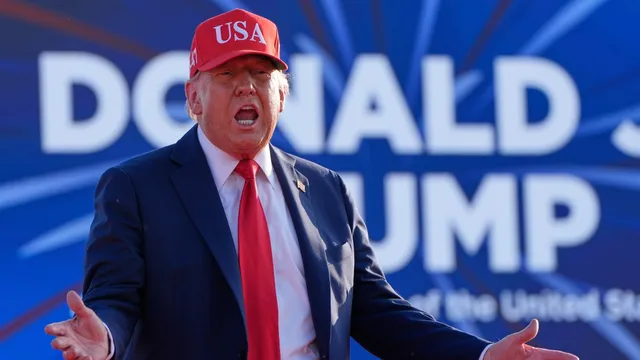
Trump faces tough choices on tariffs ahead of July 9 deadline
2025-07-04 15:40- The Trump administration's tariffs on several economies are set to take effect on July 9, following a previously imposed freeze.
- Countries like Vietnam, India, and Japan are in crucial negotiations with the U.S. to avoid steep tariffs.
- The outcome of these negotiations will determine whether tariffs stay at a baseline level, receive an extension, or surge higher.
Express your sentiment!
Insights
In the United States, President Donald Trump's administration is approaching a critical deadline on July 9, when steep tariffs previously announced will potentially take effect. A temporary freeze on these tariffs was set to expire, creating considerable uncertainty for various economies, including the European Union and Japan. Analysts suggest three likely scenarios for affected nations: they might reach an agreement to avoid the worst tariff impacts, receive an extension on the current tariff freeze, or face higher tariffs. A key element of this situation involves the negotiations that have been ongoing since tariffs were imposed in April, linked to concerns about trade deficits and reciprocity. Countries that have shown they are negotiating ‘in good faith’ might maintain their tariffs at a baseline of 10 percent for a longer period, as hinted by Treasury Secretary Scott Bessent. However, nations deemed non-compliant could see their tariffs increase dramatically. The complexities in reaching full trade agreements indicate that many deals may not be finalized by the July deadline. Observers have noted that Japan, Vietnam, and India are among those in potential pivotal positions, although progress has varied significantly among these nations. Whether countries will secure a deal remains uncertain, creating a precarious economic environment and increasing the stakes as the deadline approaches. If negotiations fail, the higher rates stipulated earlier could come into effect, presenting challenges for countries and the global economic framework.
Contexts
The economic implications of Trump's tariffs have been a topic of considerable debate and analysis since their implementation. Initially introduced as a measure to protect American industries and reduce the trade deficit, these tariffs primarily targeted products from China, as well as other nations engaged in trade with the United States. The intention was to encourage domestic production by making imported goods more expensive, thereby promoting consumption of U.S.-made products. However, the resultant nature of trade tariffs often leads to reciprocal measures from other countries, which can escalate into a trade war, ultimately affecting global trade dynamics and economic stability. The introduction of these tariffs saw immediate impacts on various sectors, particularly in manufacturing and agriculture. U.S. manufacturers faced increased costs for raw materials that were subject to tariffs. This scenario resulted in a mix of outcomes: while some sectors managed to thrive due to reduced competition from imports, others struggled due to increased production costs and reduced profit margins, leading to potential job losses. Similarly, U.S. agriculture faced retaliatory tariffs from key trading partners, leading to significant declines in exports for products like soybeans and pork. This complex interplay of effects highlighted the delicate balance in global trade relationships and the far-reaching impacts of protectionist measures. Consumer behavior also played a pivotal role in the economic ramifications of these tariffs. Increased costs from tariffs were often passed down to consumers in the form of higher prices for goods. This, in turn, affected purchasing power and overall economic sentiment. In periods when tariffs were highest, consumer confidence seemed to be adversely impacted, as individuals became more cautious about spending. Such trends can lead to slower economic growth as consumer spending constitutes a significant portion of the U.S. economy. The reductions in consumer confidence and spending could offset the intended benefits of the tariffs, creating a potential paradox in economic policy. In summary, while the intentions behind Trump's tariffs were rooted in a desire to bolster American industry, the broader economic implications reveal a more complex picture. The interplay between domestic industry growth and consumer impact, alongside retaliatory measures from trading partners, illustrates the intricacies of modern trade relations. Going forward, understanding these dynamics will be crucial for policymakers aiming to craft effective trade strategies that support domestic economic growth while mitigating adverse impacts on consumers and allied economies.